The Midland Counties Railway Act (1836) led to the building in 1840 of Leicester’s first mainline railway station, Leicester Campbell Street, on land behind London Road.
- The first railway excursion left Campbell Street Station in Leicester for Loughborough on 5th July 1841
- Cook and his family lived and worked in what is now known as the 'Thomas Cook Building' on Gallowtree Gate, a stones throw from the Clock Tower
- Cook's first overseas rail excursions was a grand circular tour of European cities in 1855
Leicester – the birthplace of popular tourism
Thomas Cook’s legacy
Thomas Cook began his international travel company in 1841, with a successful one-day rail excursion from Leicester to Loughborough on 5 July. This landmark daytrip has earned Leicester the accolade of the ‘birthplace of tourism’ as it was from these humble roots that a whole new kind of travel business developed.
Early years in Market Harborough
Thomas Cook, originally from Derbyshire, moved to Market Harborough to work as a wood-turner in 1832. Whilst there, he joined the congregation of the local Baptist church and became actively involved in the promotion of temperance (the practice of drinking little or no alcohol). On June 9th 1841, he set out to walk from Market Harborough to Leicester (15 miles) to attend a Temperance Society meeting in the town. On route, an idea occurred to him:
“A thought flashed through my brain – what a glorious thing it would be if the newly developed powers of railways and locomotion could be made subservient to the promotion of temperance”
He suggested hiring a train and carriages from the Midland Railway Company to transport the Leicester Temperance Society members to a temperance meeting in Loughborough the following month and the idea was received with enthusiasm.
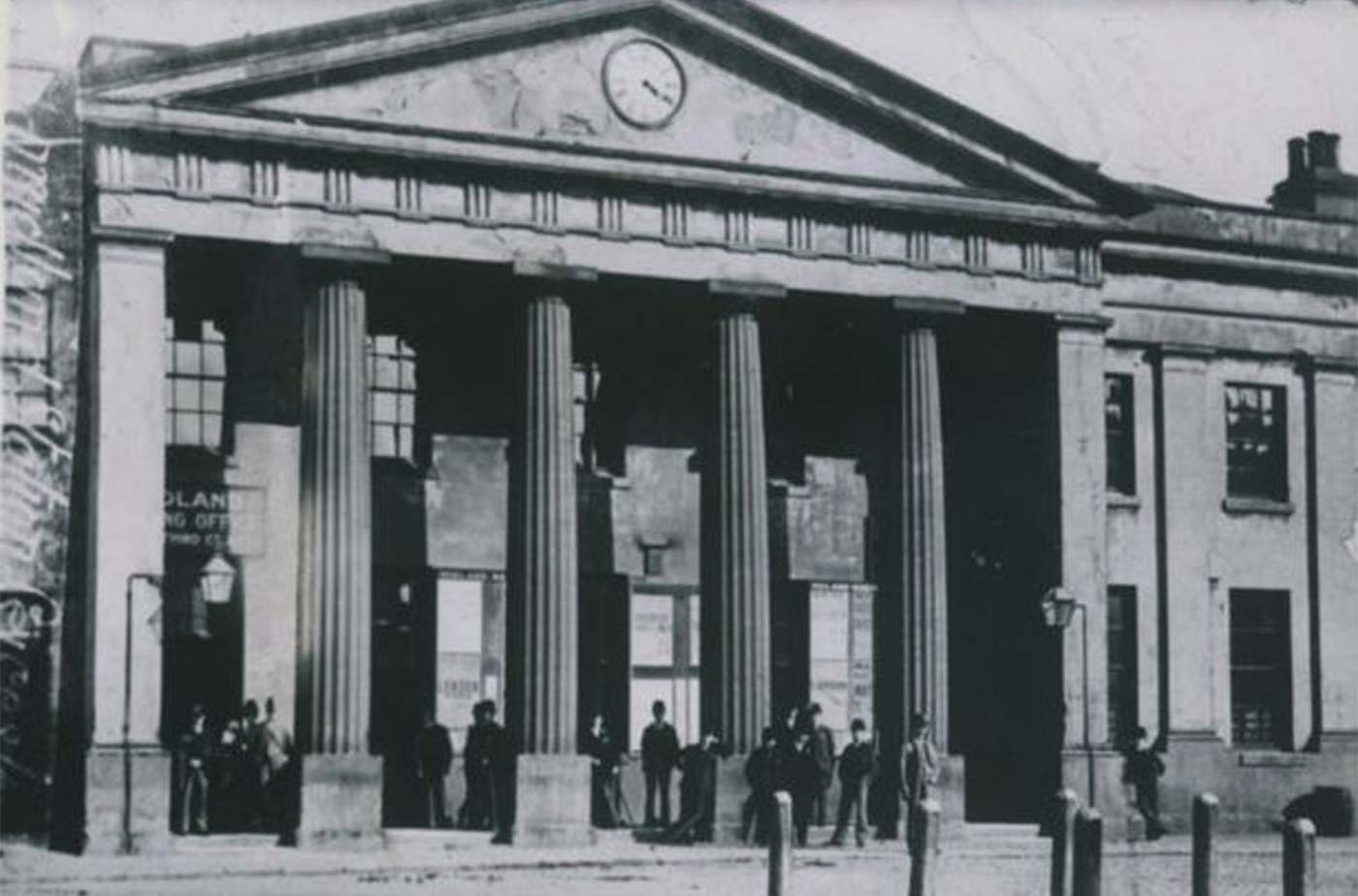
History in the making – the first rail excursion
The first railway excursion left Campbell Street Station in Leicester for Loughborough on 5th July 1841 at the cost of one shilling per passenger. Amongst the 485 passengers was Thomas Cook’s seven year old son John Mason Cook. The party travelled in open tub-style carriages and was accompanied by a band.
After a successful day of marches, speeches, games and tea in the park, the party arrived back at Leicester station at 10:30pm. History had been made. Today, a statue of Thomas Cook stands outside London Road Railway Station in celebration of this landmark event.
A move to Leicester in 1841
Two months after the first excursion to Loughborough, Cook moved to Leicester where he set up a bookselling and printing business at No.1 King Street.
During the next three summers Cook arranged a succession of trips between Leicester, Nottingham, Derby and Birmingham on behalf of local temperance societies and Sunday schools. Although these trips helped to lay the foundations of his future business, Cook made little money from them aside from printing posters and handbills.
Cook’s Rooms in Granby Street
In 1843 Cook and his family moved to 26-28 Granby Street (known as ‘Cook’s Rooms’). He used the building as a hotel, reading room, print works and a booking office for his excursions. It was to be his home for the next 10 years.
As a Baptist, Thomas would have been familiar with the various Baptist chapels in Leicester. Amongst the key ones were the Charles Street Chapel (now Central Baptist Church) built in 1830 and the Belvoir Street Chapel or "Pork Pie Chapel" on Belvoir Street, built in 1845 to a design by Joseph Hansom (inventor of the horse-drawn cab).
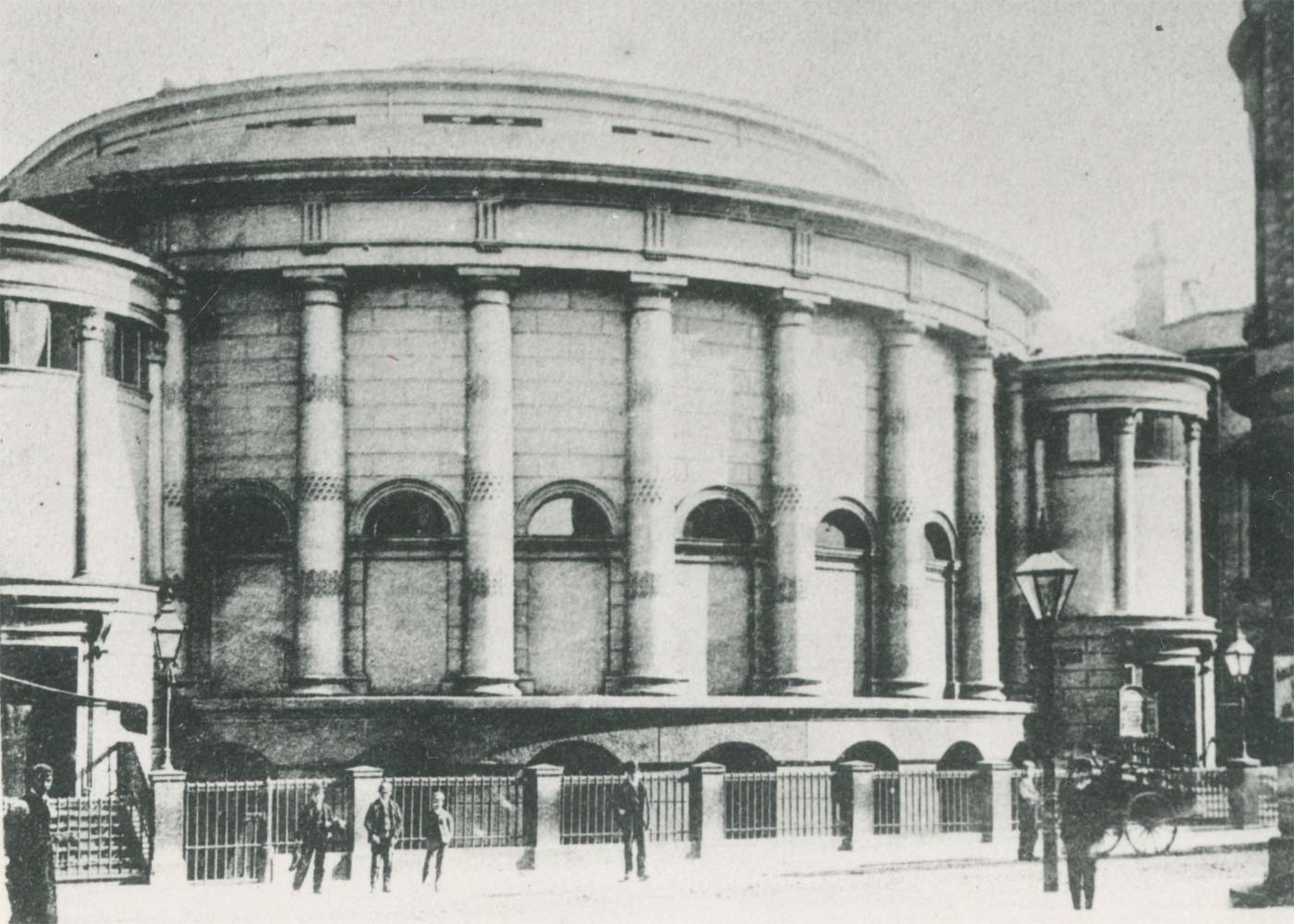
Commercial ventures and the Great Exhibition of 1851
Thomas Cook's first commercial venture took place in the summer of 1845, when he organised a trip to Liverpool. By the end of 1850, he had visited Wales, Scotland and Ireland.
In 1850, Sir Joseph Paxton, architect of the Crystal Palace, and John Ellis, chairman of the Midland Railway Company, persuaded Cook to devote himself to bringing workers from Yorkshire and the Midlands to London for the Great Exhibition. By the end of the season Thomas had taken 150,000 people to London, his final trains to the Exhibition carrying 3,000 children from Leicester, Nottingham and Derby.
The Temperance Hotel and Temperance Hall, Granby Street
1853 saw the opening of Cook’s Commercial and Family Temperance Hotel and the adjoining Temperance Hall in Granby Street. Their neighbours either side were pubs, The Nag’s Head on one side and The Wagon and Horses on the other, and Cook frequently clashed with their landlords.
Expansion into Europe
Whilst continuing to expand his business in Britain, Cook was determined to venture into Europe too. He managed to negotiate a route between Harwich and Antwerp, opening up the way for a grand circular tour to include Brussels, Cologne, the Rhine, Heidelberg, Baden-Baden, Strasbourg and Paris, returning to London via Le Havre or Dieppe. By this route, during the summer of 1855, Thomas escorted his first tourists to Europe. The success of these European tours led to the development of two important travel systems: the hotel coupon of 1868 (to pay for hotel accommodation and meals abroad) and the circular note of 1874 (a form of travellers’ cheque which enabled tourist to obtain local currency in exchange for a paper note issued by Thomas Cook).
World Tours
Building on his successes in Europe, Thomas made an exploratory trip to North America in 1865 and set up a system of tours covering 4,000 miles of railways. Four years later, in 1869, he hired two steamers and conducted his first party up the Nile. Conducted world tours soon followed and became annual events.
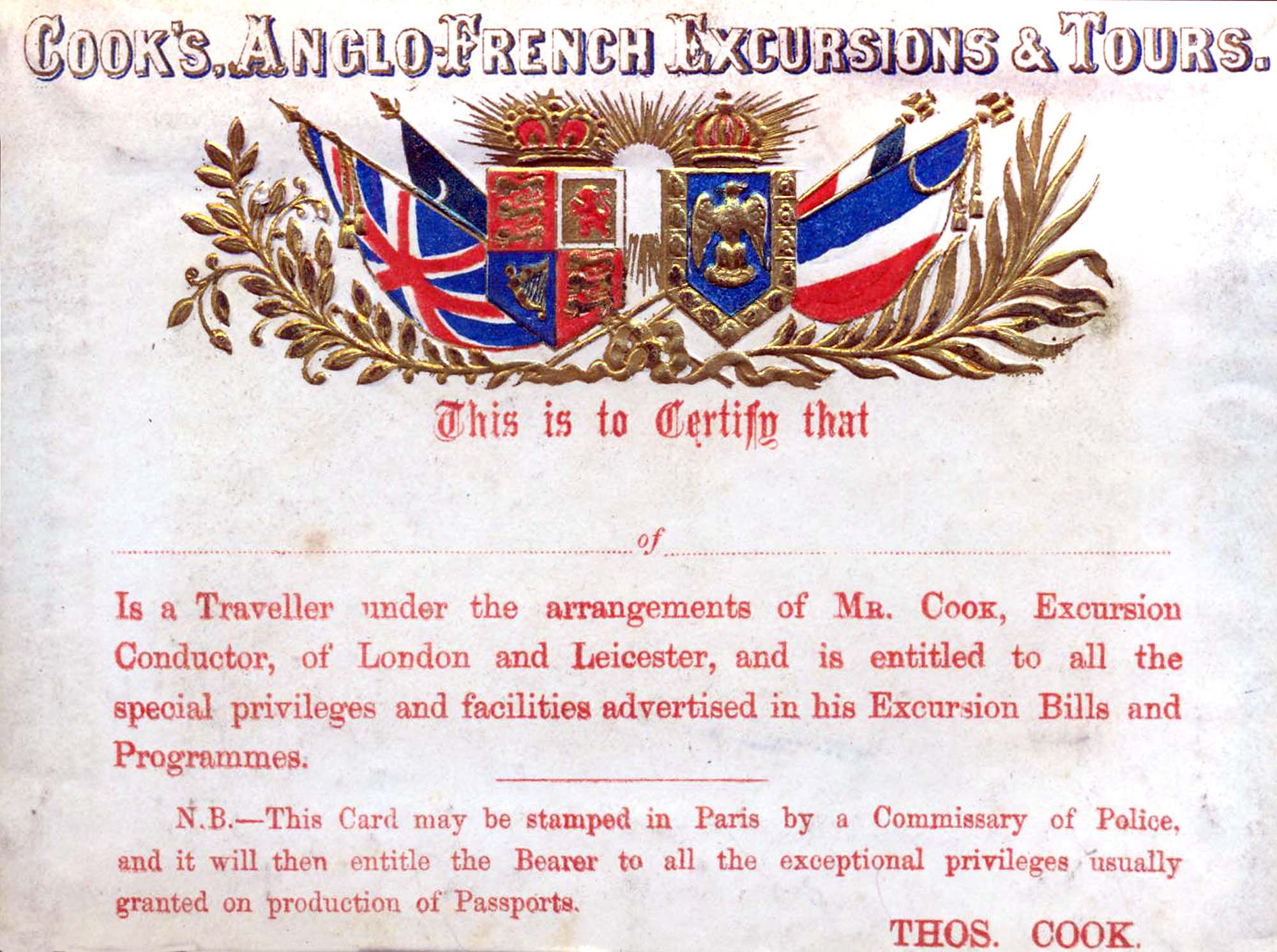
John Mason Cook
Whilst Thomas was travelling round the world, his son, John Mason Cook, was building the company back home, moving the firm to a new head office at Ludgate Circus in London. John, the more commercially minded of the two, regularly argued with his father over the direction the company should take and by 1878 their partnership had ended.
Leicester and Thomas Cook’s local legacy
With the ending of the business partnership with his son, Thomas had more time to devote to his life in Leicester and built his retirement home 'Thorncroft' at 244 London Road. In 1877 he was a founder member of the Leicester Coffee and Cocoa Company Ltd., which set up 14 coffee and cocoa houses in the town to provide alternatives to pubs. Although now with alternative uses, many of these buildings still survive including the Victoria Coffee House (38 Granby Street), East Gates Coffee House (12-14 East Gates) and High Cross Coffee House (103-105 High Street).
The death of a great travel pioneer
Thomas Cook died in 1892 and was interred in Welford Road Cemetery with his wife and daughter. John Mason Cook continued to take the business from strength to strength, opening new offices in Leicester in 1894. The Thomas Cook Building at 5 Gallowtree Gate was intended as a celebration of the company with tiled friezes on its exterior telling the story of the first 50 years of Thomas Cook & Son.
John Mason Cook died just seven years after his father in 1899. Many of the objects he acquired on his travels over the years were given to the Town Museum (now Leicester Museum & Art Gallery). The business was inherited by John's three sons and during the first quarter of the 20th Century, the firm of Thomas Cook and Son dominated the world travel scene.
Gallery

Leicestershire Record Office
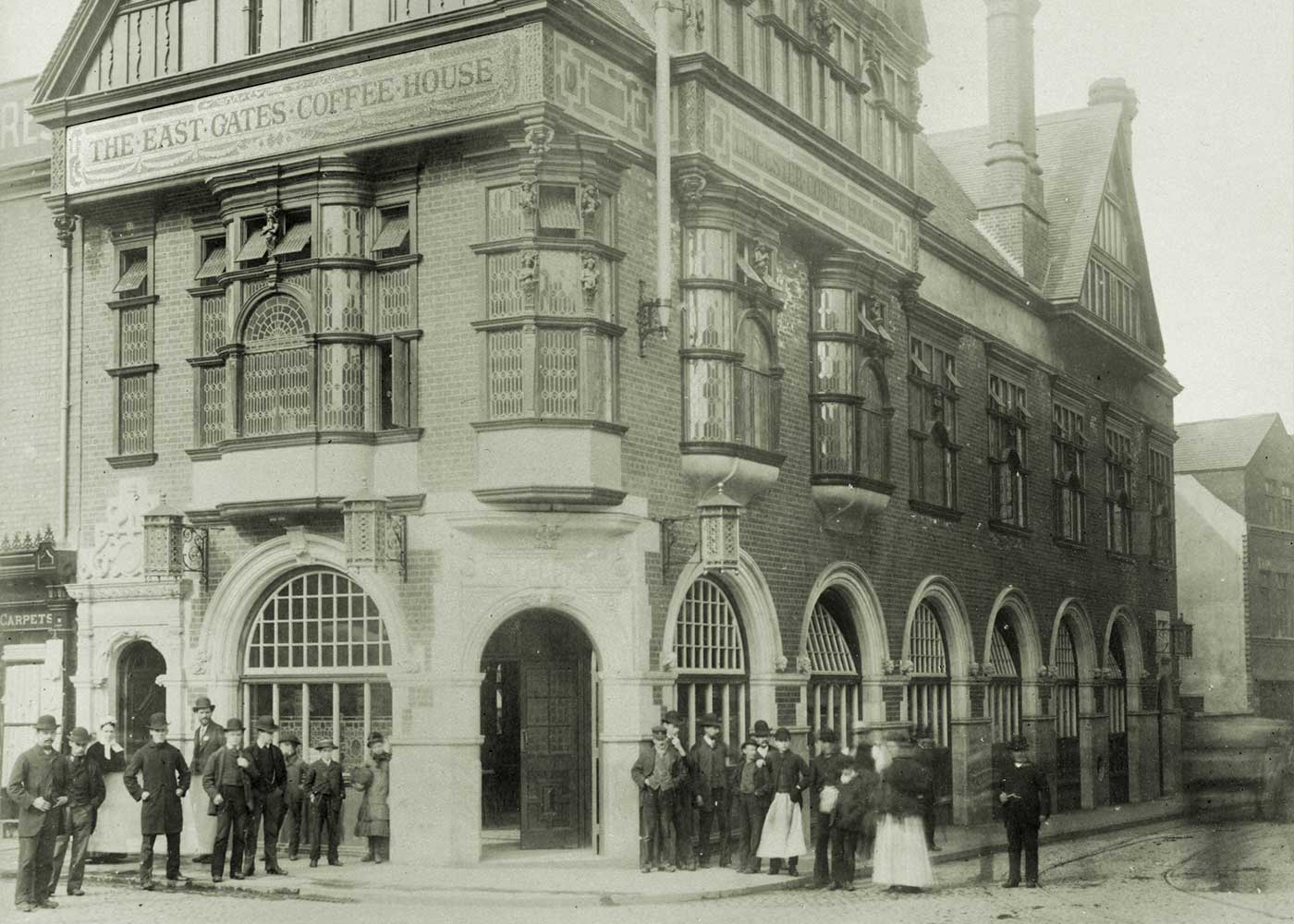
Leicestershire Record Office
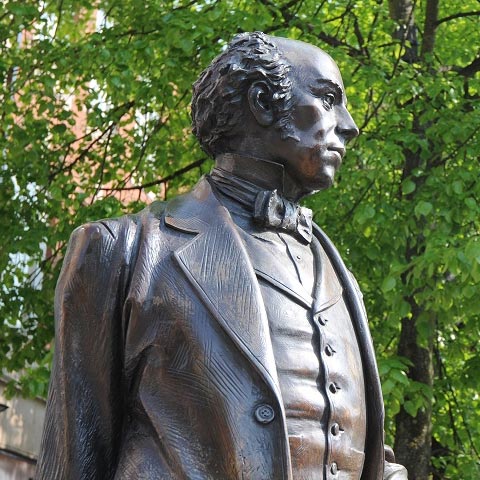


Thomas Cook's Leicester

